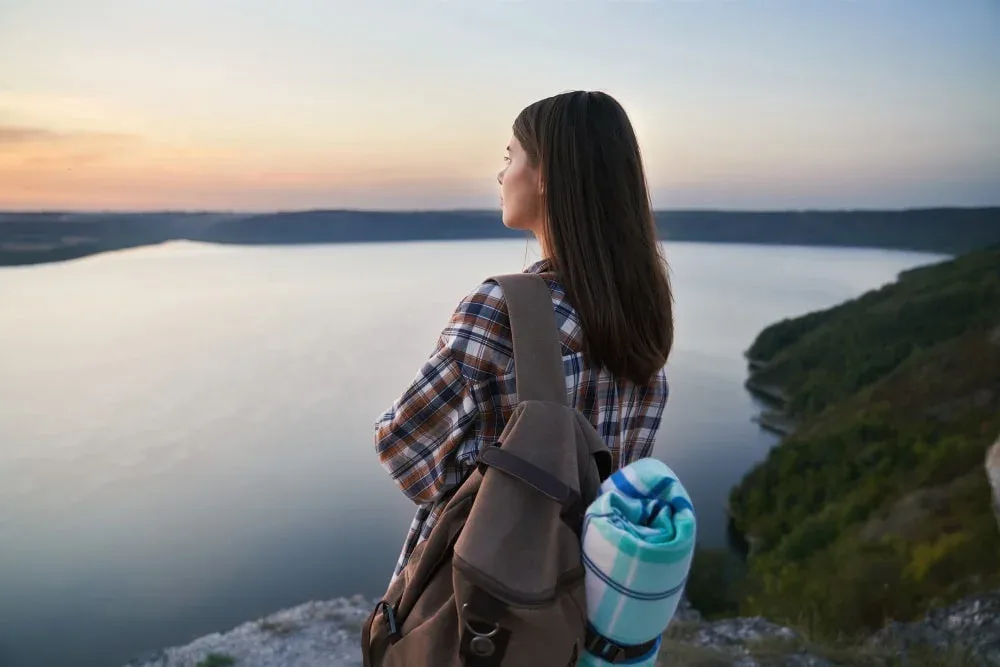Are you planning a solo trip but worried about your safety? Do you frequently travel alone for work or leisure? With the increase in solo travelers, it is important to be prepared and take necessary precautions to ensure your safety while traveling alone.
Many people, especially women, may feel hesitant to travel solo due to safety concerns. But with the right information and preparation, you can enjoy a fulfilling and safe solo trip. I have been an experienced solo traveler, and i have learned some tips and tricks that can make your solo travel journey a smooth one. And today I’ll share with you all these tips and hope it will help you on your solo trip.
You may also like: Scenic Train Journeys in Switzerland
Tips for Solo Travel Safety
1. Research your destination

Before you go on your solo trip, it is essential to research your destination thoroughly. This includes finding out about the local laws and customs, the political climate, and any safety concerns in the area. It is also helpful to research the local transportation system and familiarize yourself with the map of the city or country. By doing this, you will have a better understanding of the place and can plan your trip accordingly.
2. Share your itinerary
Sharing your travel plans with someone back home is always a wise decision. This includes your flight details, accommodation information, and any activities you have planned. In case of an emergency, this person will know where to find you and can also keep track of your travels. Also, it’s always nice to have someone back home who knows where you are and can check in on you from time to time.
3. Pack Light
Overpacking is one of the most common mistakes travelers make. Remember, you have to carry everything you bring with you, so it’s important to pack light and only bring essentials. This will not only save you from lugging around heavy bags, but it will also give you more flexibility and make traveling easier.
To pack light, make a list of the items you need and stick to it. Consider versatile clothing that can be mixed and matched, and try to bring items that can serve multiple purposes. For example, a lightweight scarf can double as a beach cover-up, a cozy shawl for cool evenings, or even a picnic blanket.
4. Pack for the local climate
When packing, it’s important to consider the weather and climate of your destination. This will guide you in choosing the right clothing and accessories to pack. Do some research on the average temperatures and weather conditions at your destination during the time of your trip.
If you’re traveling to a place with unpredictable weather, it’s always best to pack layers so you can adjust accordingly. This can include a light jacket, a cardigan or sweater, and a scarf. These items can also double as stylish accessories to elevate your outfits.
It’s also important to pack appropriate footwear for the climate and activities you’ll be participating in. If you’ll be doing a lot of walking or hiking, bring comfortable and sturdy shoes. For beach destinations, pack sandals or flip-flops. And for colder climates, make sure to pack boots that are waterproof and insulated.
Don’t forget to also pack items like sunscreen, sunglasses, and hats for protection against the sun. And if you’re traveling to a place with frequent rain or snowfall, bringing an umbrella is always a good idea.
5. Plan ahead for transportation
Transportation can often be a major expense during a trip, so it’s important to plan ahead and research your options. Consider factors such as cost, convenience, and safety when deciding on the best mode of transportation for your trip.
If you’re traveling within a city or region, public transportation may be the most cost-effective option. Look into bus or train passes that offer discounts for multiple trips or day passes. You can also use ride-sharing apps or taxi services for shorter distances.
For longer trips, consider budget airlines or train travel. They may not always be the most luxurious option, but they can save you a significant amount of money compared to traditional airlines. If you’re renting a car, be sure to shop around for the best deals and consider sharing the cost with other travelers.
6. Stay aware of your surroundings

Next, it’s important to stay aware of your surroundings while traveling. This is especially important if you are in a new or unfamiliar place. Pay attention to your surroundings and avoid walking alone at night or in areas that may not be safe. Trust your gut, and don’t be afraid to ask locals or authorities for help if something feels off. It’s wiser to prioritize caution than to face regret later.
In addition, make sure to keep an eye on your belongings at all times. This includes securing valuable items such as cash, credit cards, and electronics in a safe place. Avoid carrying large amounts of cash with you and consider using a money belt or hidden pouch to store your important documents. By being aware of your surroundings and taking precautions, you can greatly reduce the risk of becoming a target for theft or scams.
7. Avoid walking alone at night

It’s always best to have a companion when exploring new places, especially at night. If you’re walking alone, stick to areas that are well-lit and busy. Avoid dark alleys or isolated streets, as these can be potential hotspots for criminal activity.
If you find yourself feeling unsafe or uncomfortable, trust your instincts and find a safe place to wait until you can get assistance or someone to accompany you.
8. Be discreet with valuables
When traveling, be mindful of your belongings and keep them safe. This includes valuable items such as cash, jewelry, electronics, and important documents like passports or IDs. I remember my dad always telling me to keep my money and passport in a pouch attached to my waist or inside pocket of my jacket.
This way, it’s less accessible to thieves or pickpockets. If you have a purse or bag, make sure to keep it close to your body and zipped up. It’s also a good idea not to wear expensive jewelry or flashy items that could make you stand out as a target for theft.
Read More: Top 10 places to visit in faro islands
Bottom Line
Solo traveling can be an amazing experience, allowing you to discover new cultures, meet new people, and forge unforgettable memories. However, prioritizing your safety is essential when traveling alone.
By following a few simple tips that I have shared, you can greatly reduce your risk and enjoy a worry-free trip. Always trust your instincts and be aware of your surroundings, as well as research your destination and plan accordingly. Don’t forget to connect with friends and family, and always have a backup plan in case of emergencies.
Frequently Asked Questions
Is solo travel safe?
As with any type of travel, there is always some level of risk involved. Solo travel can be just as safe as traveling with a group if you take the necessary precautions and plan ahead.
How can I select a safe destination for solo travel?
Researching your destination beforehand is crucial when it comes to ensuring safety while traveling alone. Look into the crime rates, political stability, and cultural norms of the country or city you plan to visit. It’s also a good idea to read reviews from other solo travelers and gather information from forums or travel blogs.
Should I always share my travel plans with someone?
Yes, it’s a good idea to inform a trusted friend or family member about your itinerary for safety purposes.
How do I overcome loneliness while traveling solo?
Engage in activities, meet new people, and take time to enjoy your own company by exploring your interests and hobbies.
–
